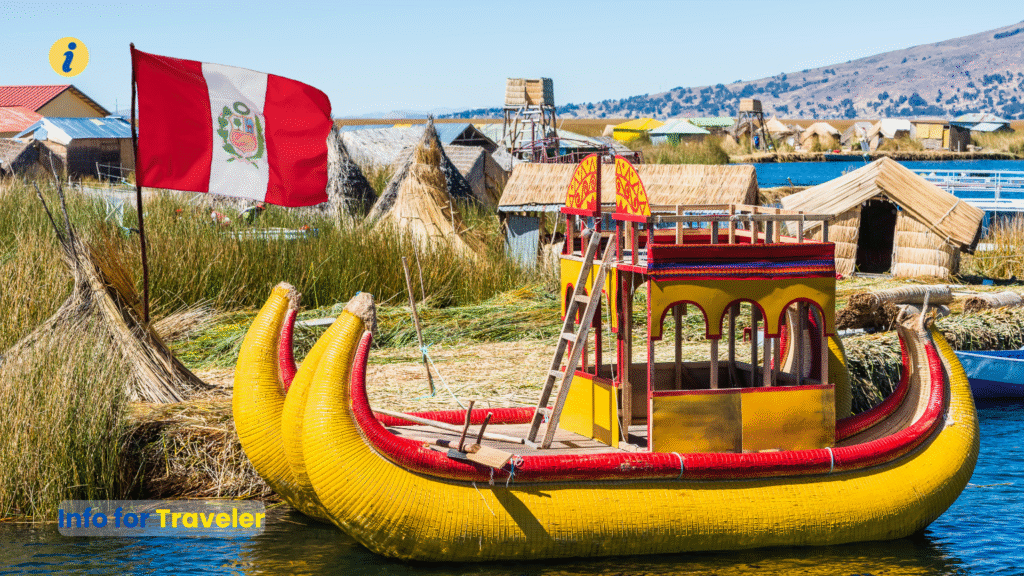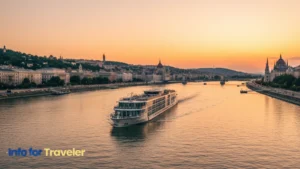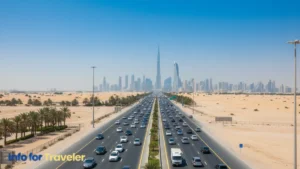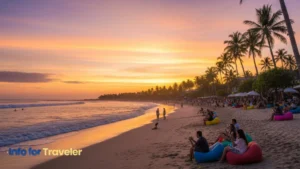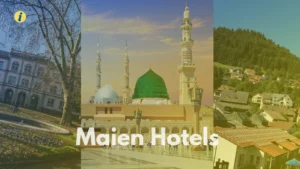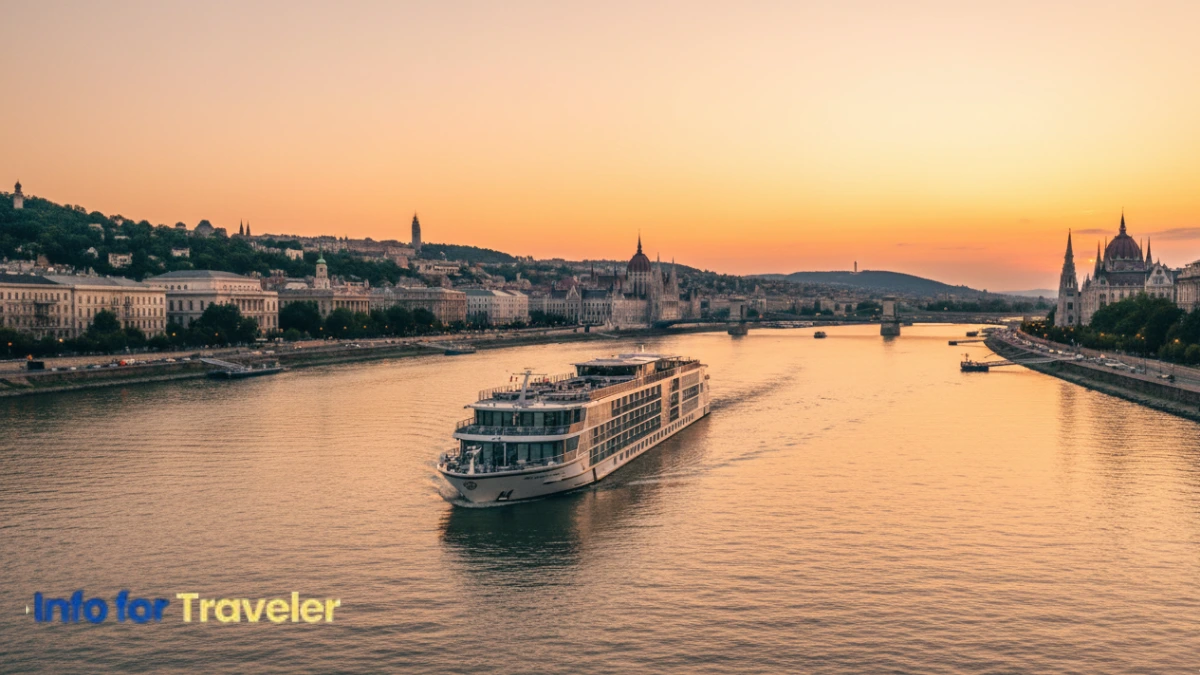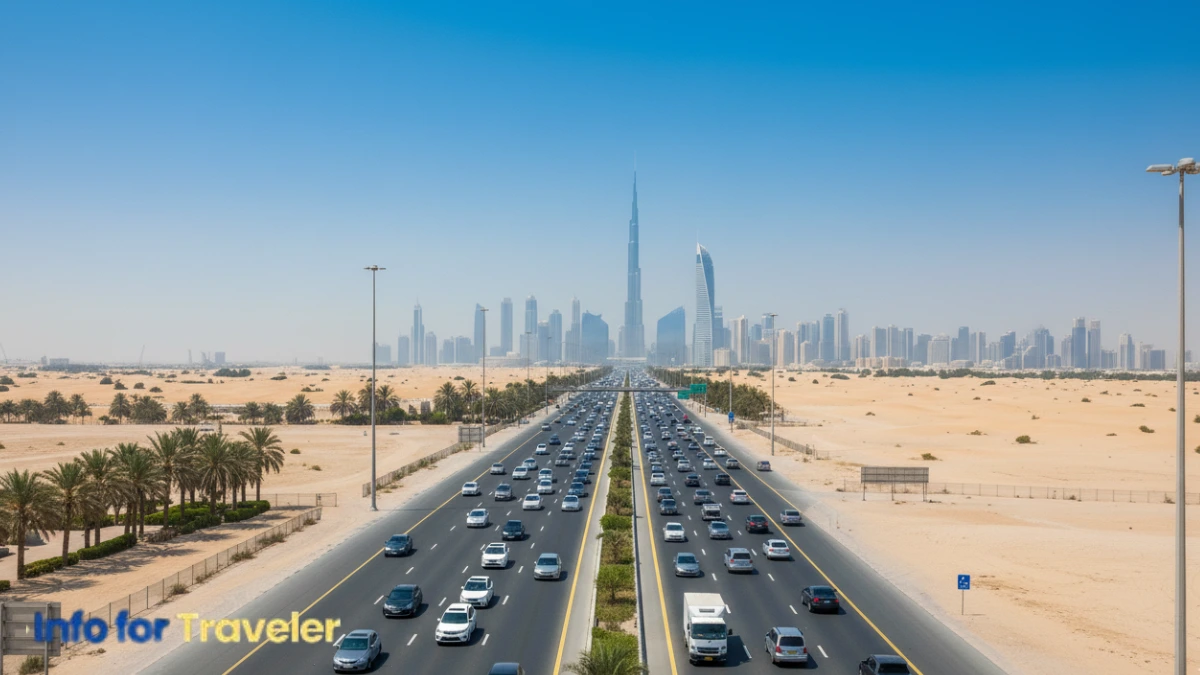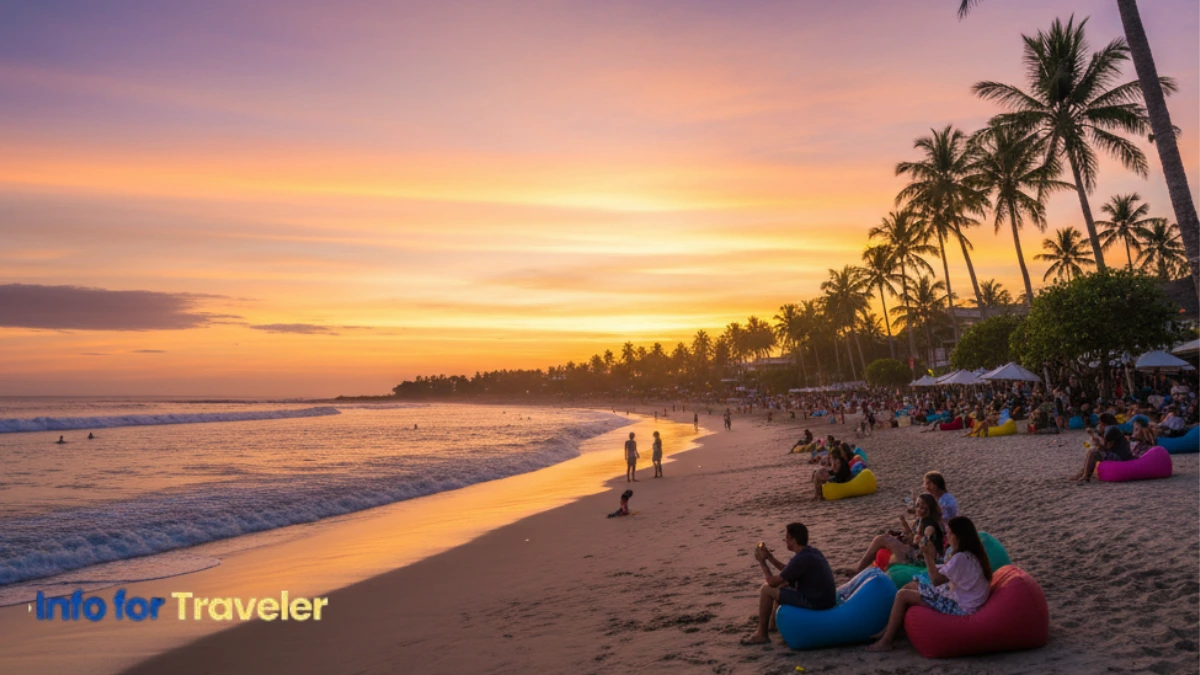Planning a Peru itinerary might seem tricky, but we’re here to make it easy. Whether you want to hike the famous Inca Trail, see the magic of Machu Picchu, explore the colorful towns of the Sacred Valley, or travel from Cusco to Lima, this guide will help you every step of the way. It’s made for all kinds of travelers, whether you’re going alone, with friends, or on a romantic trip.
Peru is full of amazing places. You can ride a dune buggy in Huacachina, spot animals in the jungle near Puerto Maldonado, or enjoy great food in Lima. With this guide, you’ll know where to go, how long to stay, what to do, and how to stay safe. We’ll also help you plan around the high altitude and big crowds, so your trip stays fun and smooth.
Next, we are gonna discuss the amazing destinations to visit in Peru form Historical places to Natural wonders.
What kind of views are in Your Peru Itinerary?
Peru is a country with many different places to see. Some are full of Inca history, and others are rich with natural beauty. You can explore old cities, climb mountains, walk through jungles, or ride across sand dunes, all in one trip.
The most famous spot is Machu Picchu, an ancient Inca city high in the Andes mountains. Near it, Cusco and the Sacred Valley offer beautiful views, old temples, and colorful markets that show Peru’s strong culture.
Nature lovers can visit the Amazon Rainforest near Puerto Maldonado, where boats take you through rivers filled with animals. You can also see giant birds flying over the Colca Canyon, or ride dune buggies in the desert oasis of Huacachina.
Whether you want to learn about Peru’s past or enjoy its natural wonders, every part of this country has something exciting to see.
Historical and Cultural Destinations to Visit in Peru Itinerary
Peru is one of the best places in the world to explore history and culture. From ancient Inca ruins to large pre-Columbian cities and Spanish colonial landmarks, the country offers a deep connection to its past. If you’re building a Peru itinerary, these historic and cultural spots must be on your list.
Machu Picchu – Lost World Wonder
One of the most famous Inca sites in the world.
Located high in the Andes Mountains above the Sacred Valley.
Machu Picchu is the most iconic historical destination in Peru. Built by the Incas in the 15th century, it was hidden from the world until its discovery in 1911. The city’s stone buildings, terraces, and sacred temples are incredibly well-preserved, making it a powerful window into Inca civilization.
Most travelers reach Machu Picchu by train from Cusco or by hiking the Inca Trail, a journey that adds even more adventure to the visit. The site sits above cloud-covered peaks and offers views that feel truly magical. Early mornings are the best time to go, especially to catch the sunrise over the Lost City of the Incas.
Visiting Machu Picchu also requires planning, as tickets and time slots often sell out. It’s part of a protected area, so rules are strict, but that’s what helps keep this wonder so well preserved. This will be the most iconic visit in the whole Peru Itinerary.
Cusco – Inca Heartbeat
Known as the historic capital of the Inca Empire.
Found in southeastern Peru, near the Sacred Valley.
Cusco is one of the most important cultural cities in Peru. It was once the center of the Inca Empire and still holds deep roots in both Inca and Spanish traditions. Walking its stone streets, you’ll see colonial buildings sitting on top of old Inca foundations.
Key attractions include the Qoricancha Temple, once covered in gold, and the Cusco Cathedral, which shows Spanish influence mixed with local artwork. The city is also known for lively festivals, traditional clothing, and open markets that show the daily life of modern Peruvians.
Cusco is more than just a stop before Machu Picchu, it’s a destination where the past and present blend together beautifully.
Sacred Valley – Sacred by Nature
A peaceful region filled with Inca ruins and farming terraces.
Stretches between Cusco and Machu Picchu along the Urubamba River.
The Sacred Valley of the Incas is a quiet, green area filled with small villages, temples, and amazing mountain views. This valley was very important to the Inca people because of its rich soil and perfect location.
Popular spots in the valley include Ollantaytambo, with its high stone walls and living Inca town, and Pisac, famous for its hillside ruins and Sunday market. You’ll also find the circular terraces of Moray, believed to be an ancient farming lab.
The Sacred Valley is a great place to rest, learn, and take in the beauty of Incan engineering and tradition.
Lima – City of Kings
A mix of colonial architecture and modern city life.
Located on the Pacific coast, and it’s Peru’s capital city.
Lima may be modern, but it holds some of the richest cultural history in Peru. The historic center of Lima is full of Spanish colonial buildings, old churches, and wooden balconies that tell stories from centuries ago.
Top cultural sites include the Cathedral of Lima, the San Francisco Monastery, and the Larco Museum, which has thousands of ancient artifacts. In the evening, neighborhoods like Barranco show the city’s artistic side with music, street art, and galleries.
Lima is also known for its world-class food, blending native ingredients with global flavors. It’s the perfect first stop on a Peru travel itinerary.
Nazca Lines – Desert Mysteries
Huge ancient drawings only seen from the sky.
Located in the Nazca Desert of southern Peru.
The Nazca Lines are one of Peru’s greatest mysteries. These massive geoglyphs were made by removing dark stones from the desert floor to show the light sand underneath. Shapes like birds, monkeys, and humans stretch across the land for miles.
No one is sure why these lines were created, but many believe they had religious or astronomical meanings. They are best seen from a small plane, which gives you a full view of these strange and beautiful figures.
If you’re interested in ancient civilizations in Peru beyond the Incas, the Nazca Lines offer a fascinating puzzle from long ago.
Kuelap – Cloud Warrior Fortress
A massive fortress built by the Chachapoyas people.
Located in northern Peru, in the Amazonas region.
While less known than Machu Picchu, Kuelap is just as impressive. It was built by the Chachapoyas, also known as the “Cloud Warriors,” long before the Incas. The site includes high stone walls, circular houses, and detailed carvings.
Kuelap sits on a mountain ridge and gives amazing views of the forested hills below. A new cable car system makes getting there easier than ever before. Because it’s not as crowded, visitors often say Kuelap feels more peaceful and untouched.
It’s a must-visit for those wanting to explore more than just the Inca side of Peru’s ancient history.
Chan Chan – City of Mud
The largest adobe city in the world.
Located near the city of Trujillo on Peru’s north coast.
Chan Chan was once the capital of the Chimú civilization, which thrived before the Incas. This vast city was made entirely of mud bricks and had palaces, homes, and roads all designed in a planned layout.
The city shows off detailed carvings of fish, birds, and sea life, reflecting the Chimú people’s close link with the ocean. Though the site has suffered damage from weather, much of it remains and is being protected and restored.
A visit to Chan Chan gives a deeper look into Peru’s coastal cultures, far different from what you see in the Andes.
Pro Checklist: Your Must haves for these locations in Peru
| Type | What to Pack | Why You Need It |
| Clothing | Light jacket, long pants, comfy shirts | For changing weather and to stay covered and comfortable |
| Shoes | Good walking or hiking shoes | Many places have stone steps and uneven paths |
| Small Backpack | Daypack for personal stuff | To carry water, snacks, sunscreen, and tickets |
| Sun Protection | Hat, sunglasses, sunscreen | The sun is strong, even when it’s cool |
| Basic Tech | Phone, camera, charger | For photos, directions, and battery backup |
| Water & Snacks | Refillable water bottle, light snacks | To stay full and hydrated while walking |
| Travel Papers | Tickets, ID, passport copy | Needed at entry points like Machu Picchu |
| Cash | Small bills in soles | Some shops and locals don’t take cards |
Natural Beauties to Visit in Peru
Peru isn’t just about ancient ruins and historic cities, it’s also home to some of the most stunning natural landscapes in the world. From peaceful high-altitude lakes to colorful mountains, deep canyons, and lush rainforests, Peru’s nature invites you to explore something new around every corner.
If you’re planning a Peru itinerary that includes outdoor adventures and scenic views, these breathtaking places belong on your list.
Lake Titicaca – Sacred High Lake
The world’s highest navigable lake and center of ancient myths.
Located on the border of southern Peru and Bolivia.
Lake Titicaca is one of the most peaceful and powerful places in the Andes. It’s the highest lake in the world where boats can travel, and many legends say it’s the birthplace of the Inca people. The calm blue waters are surrounded by rolling hills and small villages where people still live the way their ancestors did.
One of the lake’s most famous sights is the Uros floating islands, handmade from layers of reed plants. Locals live here and welcome visitors to learn about their culture and lifestyle. You can also visit Taquile Island, where people make bright woven clothes and follow old traditions.
Lake Titicaca is not just beautiful, it’s deeply connected to Peru’s identity and full of history, culture, and mountain views.
Peruvian Amazon – Wild Green World
One of the most biodiverse rainforests on Earth.
Found in eastern Peru near Puerto Maldonado and Iquitos.
The Peruvian Amazon is a vast and wild jungle filled with rivers, animals, and thick green plants. It’s home to thousands of species of birds, monkeys, insects, and even jaguars. This part of Peru is perfect for travelers who want to see nature up close and feel the magic of the rainforest.
You can stay in a jungle lodge near Puerto Maldonado or Iquitos, where guided tours take you through rivers and trails. It’s common to see toucans, giant butterflies, and pink dolphins swimming in the Amazon River. Some tours even offer night walks to see animals that only come out after dark.
A visit to the Amazon is one of the most exciting parts of any Peru nature itinerary and leaves you feeling truly connected to the Earth.
Rainbow Mountain – Painted by Nature
A colorful mountain range made by natural minerals.
Located in the Andes, southeast of Cusco.
Rainbow Mountain, or Vinicunca, is one of the most photographed places in Peru. Its red, yellow, green, and blue stripes come from natural minerals in the soil. The mountain is high in the Andes and gives travelers a one-of-a-kind hiking experience.
The hike is challenging because of the altitude, over 5,000 meters,but the view at the top is worth it. You can go with a guide, ride a horse part of the way, or join a group tour from Cusco. Along the way, you’ll see llamas, wide valleys, and snowy peaks.
This mountain has become a top spot for anyone who loves photography, hiking, or just seeing the rare natural wonders of Peru.
Colca Canyon – Home of Condors
One of the deepest canyons in the world.
Located in southern Peru, near the city of Arequipa.
Colca Canyon is twice as deep as the Grand Canyon and full of dramatic cliffs, rivers, and terraced farms. It’s most famous for the Andean condors that soar across the sky. These giant birds glide just above your head at sunrise from special viewing points.
The area is also rich in culture, with small villages where people still wear traditional clothes and grow crops the way their ancestors did. You can enjoy hiking, hot springs, and even spot volcanoes in the distance.
If you’re looking for dramatic views and real village life, Colca Canyon gives you both in one powerful place.
Huaraz – Gateway to the Peaks
A mountain town surrounded by snowy Andes summits.
Located in central Peru, in the Cordillera Blanca region.
Huaraz is a perfect base for travelers who love mountains and fresh air. It sits below the Cordillera Blanca, one of the highest mountain ranges in Peru. Many people come here to hike, climb, or just enjoy the beautiful scenery.
Popular trails include Laguna 69, a bright blue lake at the foot of glaciers, and the Santa Cruz Trek, a multi-day route through valleys and mountain passes. You don’t need to be a pro to enjoy these places, some trails are short and scenic.
Huaraz is not as busy as Cusco, so it’s a great choice for seeing nature with fewer crowds and more peace.
Huacachina – Desert Oasis
A tiny town built around a natural desert lagoon.
Found in southern Peru near the city of Ica.
Huacachina looks like something out of a storybook. It’s a green oasis with palm trees and a lake, right in the middle of giant sand dunes. People come here to relax by the water and enjoy fun desert activities.
You can ride a dune buggy, try sandboarding, or climb the dunes to watch the sunset. At night, the oasis lights up with small restaurants and calm views of the stars. It’s a unique stop that feels completely different from the rest of Peru.
Huacachina is perfect for travelers who want both adventure and chill time in their Peru nature travel.
Paracas National Reserve – Ocean Meets Desert
A protected area with sea life, cliffs, and desert views.
Located on Peru’s southern coast near the town of Paracas.
The Paracas National Reserve is where the desert touches the ocean. Here, red sand beaches meet blue waves, and wildlife is everywhere. You might see sea lions, pelicans, or even flamingos along the coast.
Many visitors start with a boat tour to the Ballestas Islands, known as the “poor man’s Galápagos.” Back on land, you can walk along trails, visit a desert museum, or just take in the wild coastal views.
This peaceful park is a perfect stop for nature lovers and anyone who enjoys ocean breezes and wide-open landscapes.
Pro Checklist: Your Must haves for Peru Itinerary
| Type | What to Pack | Why You Need It |
| Clothing | Warm layers, rain jacket, moisture-wicking shirts | Weather can be cold, hot, or rainy, sometimes all in one day |
| Shoes | Strong hiking shoes or boots | Many nature spots have mud, rocks, or steep trails |
| Small Backpack | Light daypack | For carrying water, snacks, and extra clothes |
| Sun & Bug Gear | Hat, sunscreen, insect repellent | You’ll be out in the sun and might face mosquitos |
| Basic Tech | Camera, phone, power bank | For pictures, maps, and staying connected |
| Water & Snacks | Water bottle, energy bars | Some areas are remote with no food or clean water nearby |
| Health & Safety | First-aid kit, motion sickness pills | Nature trips can be rough on the body, better to be ready |
| Travel Papers | ID, permits (for Amazon or Rainbow Mountain) | Some spots require checks or advance booking proof |
Real Experiences of People in Peru
Many travelers who visit Peru leave with memories that stay with them forever. Some face surprises, some find joy, and others discover something new about themselves. Here are two real stories from people who explored Peru and shared what it felt like.
1. Hiking Trouble on the Salkantay Trail
Traveler: Daniel, USA
Daniel joined a group hike on the Salkantay Trail, one of the longer routes to Machu Picchu. At first, the weather was perfect. The views of the snowy mountains were beautiful. But one day, heavy rain started while they were hiking.
Soon, parts of the trail became muddy and slippery. Water rushed over paths, and a small landslide blocked the way. People got scared. But the guides stayed calm and helped everyone move slowly and safely. Daniel said he was cold, tired, and a little afraid, but also amazed by how strong and helpful the team was.
In the end, Daniel said the trip taught him to respect the mountains. Nature in Peru is beautiful, but also wild and full of surprises.
What he learned: “Always prepare for anything, and never take nature lightly. The adventure was real.”
2. A Solo Trip That Changed Everything
Traveler: Emma, UK
Emma was 21 when she took her first trip alone. She had always dreamed of seeing Cusco and Machu Picchu, so she booked a flight and started her Peru itinerary with a bit of fear, but lots of hope.
When she reached Cusco, the city felt welcoming. She stayed in a small hostel where she met other solo travelers. They ate together, explored the markets, and went on short hikes. She loved the colorful streets and the mix of Inca and Spanish buildings.
Emma’s favorite moment was riding the train to Machu Picchu and finally seeing it with her own eyes. She couldn’t believe how big and magical it looked. She said it made her feel proud for doing something brave all on her own.
What she learned: “Going alone felt scary at first, but Peru helped me believe in myself.”
Two Week Peru Itinerary: Explore Peru in 14 Days
If you’re planning a full Peru itinerary, 14 days is the perfect amount of time to explore both the ancient wonders and the beautiful natural places. This plan mixes history, culture, and adventure, giving you a complete taste of what Peru travel has to offer.
In Week 1, we’ll dive into the famous historical and cultural sites. In Week 2, we’ll move on to Peru’s natural landscapes, from mountains to jungles.
Week 1 in Peru: Discovering History and Culture
The first week of your trip focuses on Peru’s heritage—from ancient Inca ruins to colorful city streets. You’ll start in Lima and journey through the Sacred Valley to the incredible Machu Picchu.
Day 1: Arrive in Lima
Land in Peru’s capital, Lima, and settle into the city. Explore Miraflores, try some local Peruvian food like ceviche, and take a walk along the Pacific Coast.
Day 2: Lima to Nazca Lines (via Ica)
Take a road trip to Ica and enjoy a quick look at the Huacachina desert oasis. Continue to the Nazca Lines and take an optional flight to see the mysterious giant drawings from the sky.
Day 3: Nazca to Cusco
Fly or bus to Cusco, the old capital of the Inca Empire. This city is full of colonial charm and cobblestone streets. Rest to adjust to the high altitude.
Day 4: Explore Cusco
Visit Sacsayhuamán, the Cusco Cathedral, and the vibrant San Pedro Market. Learn about Inca and Spanish history through art and local life.
Day 5: Sacred Valley Day Trip
Travel to the Sacred Valley, stopping in Pisac and Ollantaytambo. You’ll see Inca terraces, ruins, and colorful markets. Sleep in Ollantaytambo for a head start to Machu Picchu.
Day 6: Visit Machu Picchu
Take the train to Aguas Calientes, then the bus up to Machu Picchu. Explore this world wonder and feel the magic of the Inca citadel. Return to Cusco in the evening.
Day 7: Day Trip to Kuelap or Chan Chan
For history lovers, fly north to see either Kuelap, a fortress in the cloud forests, or Chan Chan, the world’s largest adobe city on the coast.
Week 2 in Peru: Experiencing Nature’s Beauty
This week takes you through Peru’s most amazing natural sites—from deep canyons to colorful mountains and wild jungles. It’s your chance to relax, explore, and connect with nature.
Day 8: Travel to Colca Canyon
Fly to Arequipa and take a scenic ride to Colca Canyon, one of the deepest canyons in the world. Spot wild llamas and watch condors soar.
Day 9: Hike in Colca Canyon
Wake up early to enjoy views, hot springs, and hikes. The canyon offers peaceful trails and chances to see Andean villages.
Day 10: Visit Lake Titicaca
Head to Puno and sail across Lake Titicaca, the world’s highest navigable lake. Visit the Uros floating islands and meet local families.
Day 11: Explore Huaraz
Fly or bus to Huaraz, a mountain town in the Andes. Relax and enjoy the mountain air, preparing for hiking adventures.
Day 12: Hike near Huaraz (Laguna 69 or Lake Parón)
Choose an easy or moderate hike to Laguna 69 or Lake Parón. Both lakes are surrounded by snowy peaks and bright blue water.
Day 13: Rainbow Mountain Day Trip
Take a guided trip to the colorful Rainbow Mountain. It’s a long day, but the stunning stripes of color are worth it.
Day 14: Explore the Amazon Rainforest
Fly to Puerto Maldonado for a quick jungle visit. Stay in an eco-lodge and enjoy a night walk in the Peruvian Amazon to see monkeys, birds, and more.
Final Thoughts on Your Perfect Peru Itinerary
Making a Peru itinerary is not just about visiting places. It’s about having real experiences and seeing amazing things you’ll remember for a long time. Peru is full of history, culture, and nature. You can walk through the old streets of Cusco, stand in front of Machu Picchu, explore the big city of Lima, or ride a boat on Lake Titicaca.
We talked about the best places to visit in Peru, from ancient ruins like Chan Chan and Kuelap, to natural spots like Rainbow Mountain, Huacachina, and the Amazon rainforest. Each place is special and has its own story. You also got simple packing tips and read real stories from travelers who shared what they felt in Peru.
Peru is a mix of adventure, beauty, and learning. It’s a country that offers something for everyone.
Want to explore more places like this?
Check out our BLOG page for more easy guides and real stories.
If you liked this, you will find this fascinating Cheap Tourism in Iran | An Amazing Low Budget Trip
FAQs – Trending Queries
1. What is a good 7-day Peru itinerary for first-time visitors?
A 7-day Peru travel itinerary often includes Lima, Paracas/Huacachina, Cusco, Sacred Valley, Rainbow Mountain, and Machu Picchu. This route gives you a mix of city fun, desert adventure, mountain hikes, and history.
2. How many days should I spend in Cusco to avoid altitude sickness?
Most travelers stay 2–3 days in Cusco to adjust slowly. Take it easy, drink water, try coca tea, and skip hard hikes for the first day or two to help with altitude sickness.
3. Is Huacachina worth visiting on a Peru trip?
Yes! Many Reddit users say Huacachina desert oasis is a highlight. You can ride dune buggies, sandboard, and watch the sunset. Just one night is enough for these fun activities.
4. Should I rest after altitude tours like Rainbow Mountain?
Definitely. Tours like Rainbow Mountain are high and start early. Locals suggest doing these activities every other day, mixing high-altitude hikes with rest and tasty meals in Cusco.
5. What’s the best season to visit Machu Picchu?
The dry season from May to September is the most popular time. You’ll get clearer skies and fewer rain interruptions. But it’s also busier, so book early for entrance tickets and train rides.
6. Can I do Machu Picchu without hiking the Inca Trail?
Yes. Many travelers take the scenic train from Ollantaytambo to Aguas Calientes, then a short bus ride up to Machu Picchu. It’s easier, less tiring, and faster than the multi-day hike.
7. Do I need a guide for the desert dunes in Huacachina?
If you want dune buggy rides, yes, it’s safer with a guide. But walking or sandboarding alone is okay. Just be careful of hot sun and deep sand.
8. How much time is enough for a family trip to Peru?
For families with kids or older members, 10–14 days is ideal. You can stay relaxed in Cusco, take easy day trips, enjoy desert adventures, and still have fun without rushing.

